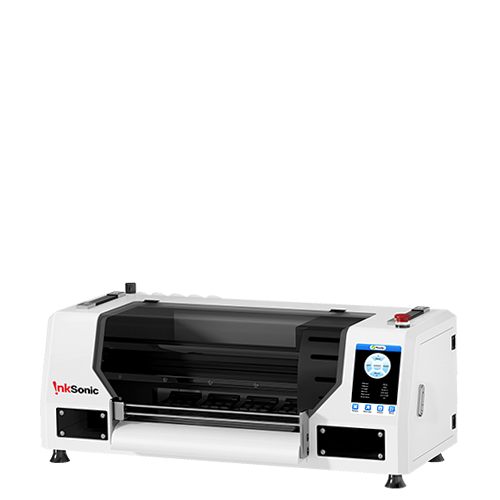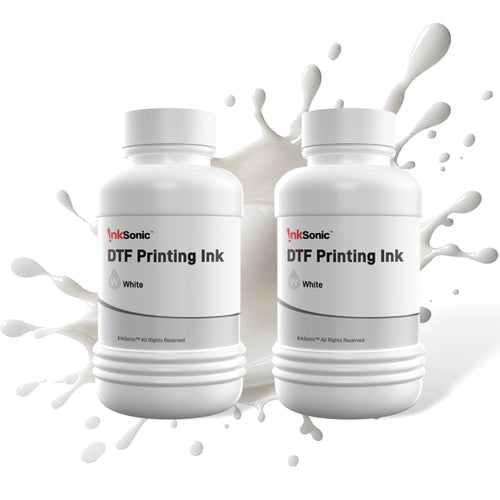The printer hums away, the aroma of freshly printed film fills your nostrils, and the deadline creeps up on you. You raised the container of DTF powder, gave it a few shakes, and were getting ready to coat the next sheet, but as you scooped it out...crunch. Instead of a soft, free-flowing powder, it was a stubborn block of mass that would not let go. You'll patchy coat, uneven cure, and horrible result where there was once a flawless design that looked like it went through a rainstorm.
Frustrating? Absolutely. But here’s the kicker — the culprit isn’t your printer, your ink, or even your technique. It’s the way your powder has been stored.
While DTF powder may appear uncomplicated, it is one of the most temperamental components of your printing. When exposed to moisture, heat or moisture, or even simply forgetting to close the container, DTF hot melt powder can change from a smooth and fine adhesive into a clumpy disaster that will ruin your print. Plus, if you calculate that wasted film, ink, and time spent printing a reprint, that "small" storage mistake can soon become a pricey habit!
If you want every transfer to stick perfectly, cure evenly, and survive countless washes, proper DTF hot melt powder storage isn’t just a nice-to-have — it’s the foundation of a smooth, efficient workflow.

What is DTF Powder
DTF hot melt powder may seem like a plain ingredient, but actually plays an important part in the Direct-to-Film printing process. DTF adhesive powder is a very fine adhesive powder that adheres to the printed film that helps to transfer a well-printed, vibrantly colored design onto a fabric or other substrate.
Because DTF adhesive powder is so important to the process, how you maintain your DTF powder storage isn't just a nice thing to do, it is a requirement if you want every print to be flawless with a long lasting imprint.
What Affects DTF Adhesive Powder Quality
Keep your powder somewhere that's too hot, and the heat can subtly alter its consistency, so that it becomes less reactive when curing.
Even light is not blameless — some powders will yellow after prolonged exposure, softening the crisp whites you've worked to achieve. And then there's contamination. A stray dust speck, bit of lint, or even a hair can be unnoticeable at first, but once embedded in the powder, it will form bumps or blemishes that will stand out like neon lights on your finished design.
Guarding your powder from these threats is not only a matter of preserving shelf life — it's a matter of safeguarding every print job that depends on it.
Best Containers for It
When it comes to keeping your DTF hotmelt powder in its optimal state, the storage jar you employ can be the determining factor. Glass or plastic jars with tight-fitting lids are a favorite, shutting out moisture and dust but keeping the powder freely accessible. Vacuum jars constructed of food-grade material for storage over weeks and months is an upgrade move by evacuating the room air so that your powder stays fresh and freely flowing for weeks and even months. And if mobility is top priority, resealable Mylar bags or zip-lock bags are lightweight, minimal in storage space, and perfect for take-anywhere projects. Don't rule out the factory original packaging, either — if resealable, it's often packaged to maintain maximum powder quality since the moment it was manufactured.
A note: Never store powder in bare metal containers, because static will cause the particles to adhere to the walls, making measurement and cleaning a frustrating experience.
The Best Way to Store DTF Powder for Flawless Prints
Good handling and storage practices can help mitigate the deterioration and performance of your DTF adhesive powder.
If you're using a container, be sure to use a clean and dry container to measure your powder. Don't use your hands to measure powder. Your hands can transfer oils, moisture, and small pieces of skin to your powder. Further, after you have scooped what you need, always secure the container once you have finished. If the humidity is high, you don't want the powder left open, even for ten minutes- humidity is detrimental to stability in your DTF prints - clumping starts to happen along with inconsistent performance.
Finally, label your containers with the powder type, the date you opened it, and its expiration date. This not only helps you track freshness but also prevents mix-ups when you’re juggling multiple types or batches of powder.
Storage Method |
Moisture Protection |
Portability |
Cost |
Airtight jar |
High |
Medium |
Low |
Vacuum container |
Very High |
Low |
High |
Mylar bag |
High |
High |
Medium |
Best Environmental Conditions to Store DTF Powder Safely
Your DTF adhesive powder's storage location is as much a part of the process as the container in which it is located. If you can, experiment to find the driest condition avoiding direct sunlight, but also are comfortable and maintain a steady ambient temperature. Because if the powder is exposed to sunlight, the temperature may cause the powder to slowly deteriorate over time.
Another consideration is to avoid temperature fluctuations at all costs. So, leaving it in a garage, basement, or near windows where drafts enter and heat sources just isn't going to be a good plan.
Controlling the climate is the real secret to the best chance of having your powder as in good of shape and quality as when you initially opened it.

How Long Can You Store DTF Powder?
DTF adhesive powder typically has a shelf life of about six months or less once opened, so it’s best to use it as quickly as possible for optimal results. Once the powder is opened, it becomes exposed to the air and moisture which will make its quality deteriorate, landing in chunky and off-colored or bad bonding material. Although storing it in good-quality airtight containers and in cooler, dry conditions can help slow down that process, the sooner you use the powder, the better your prints will turn out. Remembering this timeline will help you control your inventory properly and prevent expensive waste in the form of expired powder.
Troubleshooting Section
If you notice small clumps, gently breaking them apart by sifting the powder through a thin mesh or stirring very gently should fix a smoother feel. But if the clumps are rigid and don't budge, it is a sign the powder is likely too degraded to be used dependably. Presence of evidence of contamination—like hairy-looking mess, dust, or coloration—is the best time to discard the tainted powder to avoid flaws in your prints. Regular checks on your powder and moving quickly when you notice the first sign of problems can save you from spending dollars to reprint and maintain the productivity of your workflow.
How to Test Your DTF Powder Before Use
Before diving into a full print job, it’s smart to quickly test your DTF adhesive powder to ensure it’s still in prime condition.
Start by gently shaking or stirring the powder to break up any small clumps—if it's gritty or contains hard lumps that can't be broken up, that's a sign of trouble. Next, check the texture: the powder should be smooth and flowing freely, nearly talcum-like. If it is sticky or damp, water has penetrated. For a last test of safety, do a little test print and see how nicely the powder coats and cures; poor coating or poor adhesion more than likely indicates storage problems. Catching these problems early on saves you time, film, and ink down the road.
Before launching into a full print production run, it is advisable to check your DTF adhesive powder to ensure that it is still in good condition.
To begin with, you should either lightly shake or stir the powder to break up clumps. If it looks chunky, or there are clumps that still will not break up, you likely have a problem.
Next, you should feel the texture of the powder, which should feel light and flowy (like talcum powder). If it feels wet or tacky, you have likely allowed water to penetrate it at some point.
To perform another safety check, we also recommend trying a small test print to see how the powder adheres and sets. If the powder shows little to no adhesion or there are inconsistencies in the coating, it is mostly likely an issue from storage. It is a good practice to catch this stuff early so that you don't waste film, ink, or time.
Step-by-Step Storage Routine Checklist
Here’s a clear, easy-to-follow Step-by-Step Storage Routine Checklist you can include as a printable or downloadable resource for your readers:
DTF Powder Storage Routine Checklist
Use a Clean, Dry Container
Always contain your powder with a clean, dry tool, not hands.
Seal the Powder Immediately After Use
Immediately after scooping the container should be sealed to avoid exposure to air and moisture.
Store Powder in an Airtight Container
Store in an airtight plastic or glass jar, vacuum sealed container, or resealable Mylar bags.
Add Moisture Absorbers
Consider putting silica gel packs or other desiccants inside of the container to promote humidity control.
Store powder in a cool, dry, and safe place.
Avoid direct sunlight or heat source and fluctuations in temperature.
Label Your Containers
Label with the type of powder, date opened, and expiration date to promote tracking.
Avoid Mixing Old Powder with New Powder.
Do not combine the powders together and keep your old powder in a separate container to promote freshness.
Inspect your powder on a regular basis.
Make sure to check the powder for any clumps, discoloration or signs of contamination before each use.
Properly Dispose of Powder
Any powder that has irreversible clumping or has been contaminated should be discarded.
Tips on Environmental Impact and Sustainability
If you’re a person who cares about the environment, I think this can also be a process to be a little more environmentally-friendly with your DTF adhesive powder storage. Instead of tossing something out after one use, consider reusable glass jars or a tough plastic container you can clean and reuse. These choices and those like it may feel small but they all add up, and will help you keep your printing smooth while doing your part for the environment!
Conclusion
The best way to container DTF powder is to store it in a sealed container at room temperature away from direct sunlight. Proper storage of DTF adhesive powder is not merely an issue of convenience in terms of your own usability - it is a necessity for the quality and consistency of each and every print. If your DTF adhesive powder isn't properly protected from moisture, heat, or contaminants, you can expect inconsistent coatings, improper adhesion, and designs that, over time, don't last. Therefore, it is extremely important to properly store DTF powder.


































